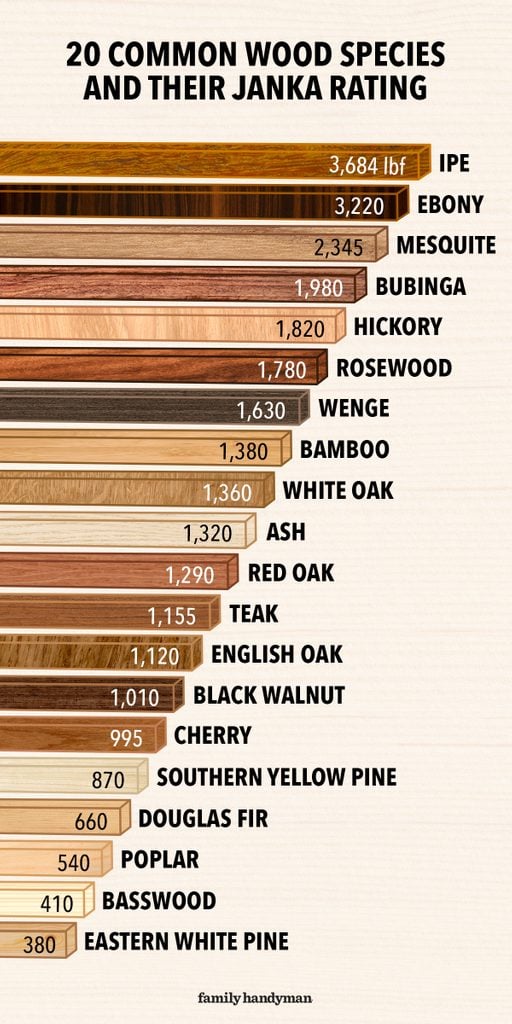What Is the Janka Hardness Scale?
We’ve all been there. A young woodworker making their first big project. Most often, it’s a table of some kind. Coffee or dining, it doesn’t matter. What you’ve made is magnificent and you’re beaming with pride as you bring it into its new home.
You set it in place, and within hours your child, dog or overly excited friend puts a nice dent in the top. For me, it was a cypress coffee table and the hard sole of a friend’s boot. Heartbreaking. How could this happen? Surely wood should be able to withstand a friend kicking their boots up on my new table?
But just as wood comes in different colors and sizes, it also comes in different densities. I didn’t know how soft cypress was at the time. And I didn’t know what woods might have been better choices for durable table tops.
Let’s dive into the Janka hardness scale so you don’t make the same mistake I did.
What Is the Janka Hardness Scale?
The Janka scale, simply put, records the density of wood by testing its resistance to denting. The test measures the force required to embed a .444-inch (11.28mm) diameter steel ball halfway into a piece of wood. That force is recorded in pounds-force (lbf) in the U.S. or in kilograms-force (kgf) or newtons (N) in other parts of the world.

Who Created the Janka Hardness Scale?
Austrian wood researcher Gabriel Janka created the hardness test that bears his name in 1906. He sought to create a reliable and objective method for testing wood density for industrial applications. By modifying a process to test the hardness of metals, Janka invented the scale we still use today. The higher the number, the more durable the material.
Why You Should Know About the Janka Hardness Scale
I refer to the Janka scale regularly when making material decisions for upcoming projects. Here are a few reasons why the Janka scale is helpful to all woodworkers.
Hardwood vs. softwood
Did you know the terms “hardwood” and “softwood” don’t actually refer to the hardness of a given species? The terms are actually shorthand for deciduous trees (the ones that lose their leaves each fall) and coniferous trees (evergreens), respectively.
Generally, deciduous trees are denser than conifers, but not always. Basswood is a deciduous tree commonly used in carving due to its consistency across growth rings and a low Janka rating of 410. Western white pine, however, is a conifer with a Janka rating of 420.
Referring to the Janka scale can help you avoid choosing a soft “hardwood” when durability is a concern.
Choosing the right wood for the job
Researching durable flooring? Sure, reclaimed hemlock looks fantastic. But with a Janka rating of 500, it might not hold up to your dog’s afternoon zoomies.
To put that into perspective, you can generally use your thumbnail to dent a piece of wood until around the 1,000 to 1,100 range. So hemlock will look lovely, but it will take a beating. If you’re a no-shoes-in-the-house kind of person, it may be just fine. But if your household includes dogs, children and work boots, I would lean toward white oak with its rating of 1,360.
The softest wood in the world?
Balsa! It’s so soft it’s often used for insulation or buoyancy and rarely in furniture. With a Janka rating of 70, it’s more than five times softer than eastern white pine! It’s more akin to cardboard than your typical wood species. I’ve even crushed particularly soft pieces in my hand.
You may ask, what’s the hardest wood in the world? The answer is Australian buloke. And with a Janka rating of 5,060 lbf, it’s harder than stone. A wood that hard will do serious damage to your machines, so I personally see little upside to dabbling with the hardest of hardwoods.
Article source here: What Is the Janka Wood Hardness Scale?


No comments:
Post a Comment